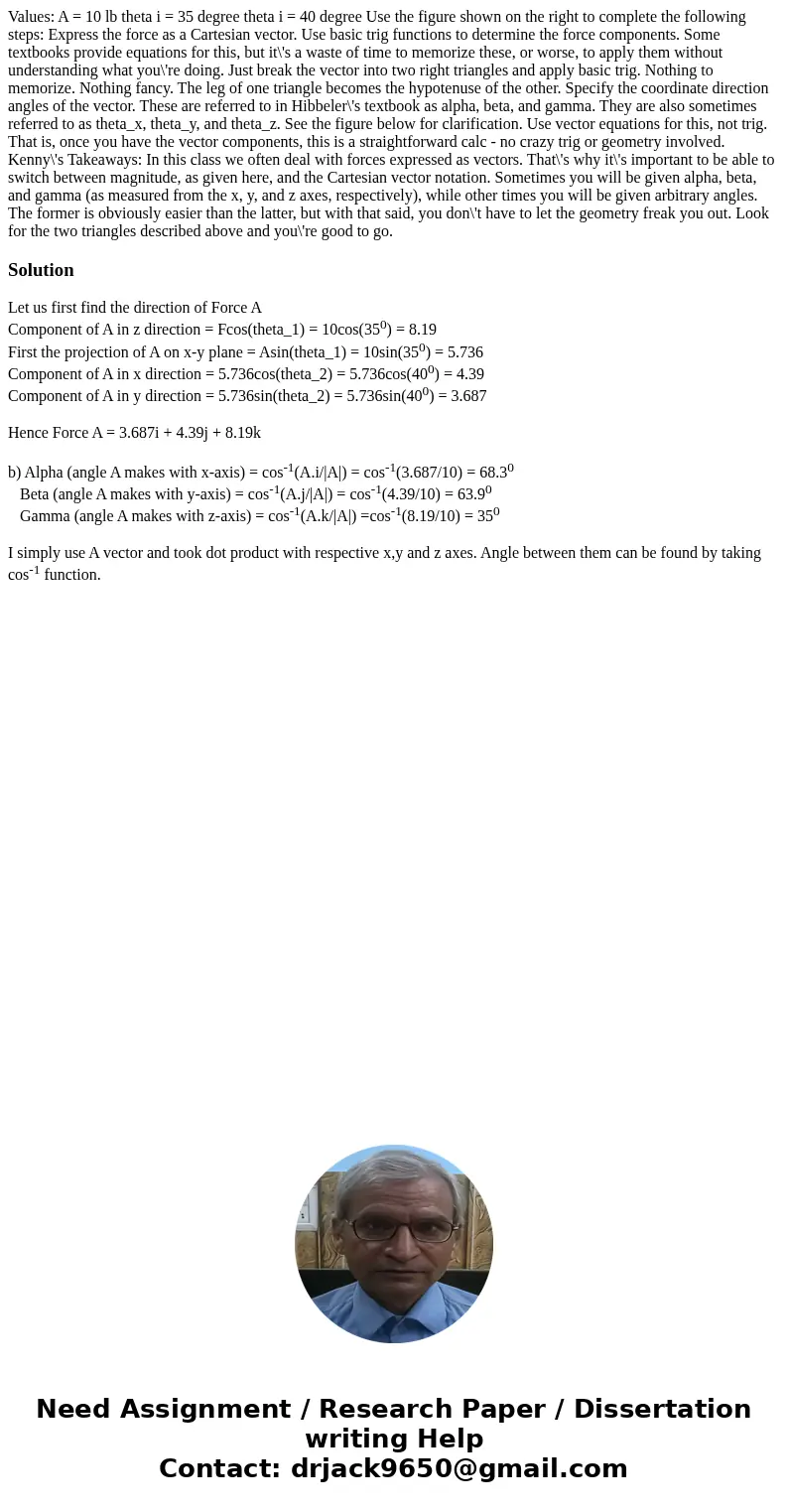Values A 10 lb theta i 35 degree theta i 40 degree Use th
Values: A = 10 lb theta i = 35 degree theta i = 40 degree Use the figure shown on the right to complete the following steps: Express the force as a Cartesian vector. Use basic trig functions to determine the force components. Some textbooks provide equations for this, but it\'s a waste of time to memorize these, or worse, to apply them without understanding what you\'re doing. Just break the vector into two right triangles and apply basic trig. Nothing to memorize. Nothing fancy. The leg of one triangle becomes the hypotenuse of the other. Specify the coordinate direction angles of the vector. These are referred to in Hibbeler\'s textbook as alpha, beta, and gamma. They are also sometimes referred to as theta_x, theta_y, and theta_z. See the figure below for clarification. Use vector equations for this, not trig. That is, once you have the vector components, this is a straightforward calc - no crazy trig or geometry involved. Kenny\'s Takeaways: In this class we often deal with forces expressed as vectors. That\'s why it\'s important to be able to switch between magnitude, as given here, and the Cartesian vector notation. Sometimes you will be given alpha, beta, and gamma (as measured from the x, y, and z axes, respectively), while other times you will be given arbitrary angles. The former is obviously easier than the latter, but with that said, you don\'t have to let the geometry freak you out. Look for the two triangles described above and you\'re good to go.
Solution
Let us first find the direction of Force A
Component of A in z direction = Fcos(theta_1) = 10cos(350) = 8.19
First the projection of A on x-y plane = Asin(theta_1) = 10sin(350) = 5.736
Component of A in x direction = 5.736cos(theta_2) = 5.736cos(400) = 4.39
Component of A in y direction = 5.736sin(theta_2) = 5.736sin(400) = 3.687
Hence Force A = 3.687i + 4.39j + 8.19k
b) Alpha (angle A makes with x-axis) = cos-1(A.i/|A|) = cos-1(3.687/10) = 68.30
Beta (angle A makes with y-axis) = cos-1(A.j/|A|) = cos-1(4.39/10) = 63.90
Gamma (angle A makes with z-axis) = cos-1(A.k/|A|) =cos-1(8.19/10) = 350
I simply use A vector and took dot product with respective x,y and z axes. Angle between them can be found by taking cos-1 function.

 Homework Sourse
Homework Sourse